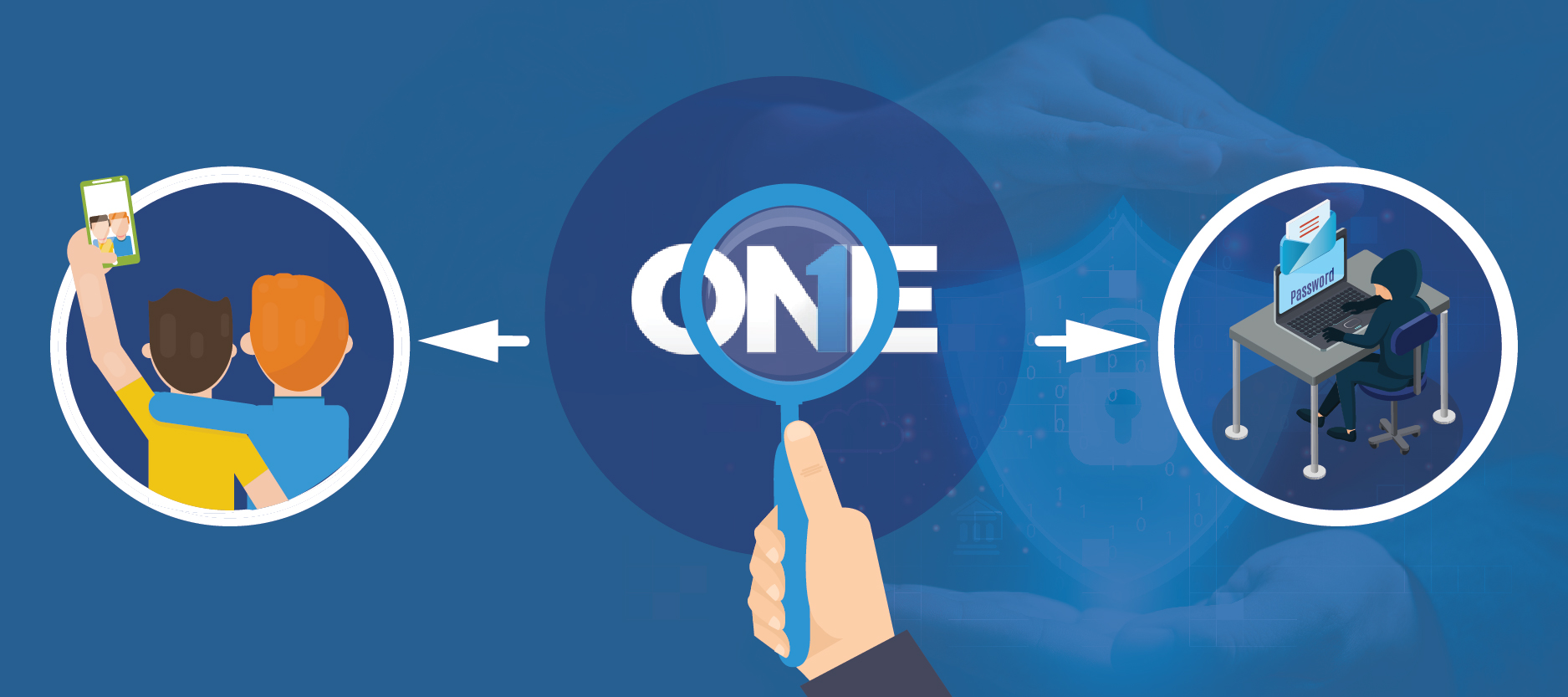Do you want to snoop around someone without crossing any lines? As a parent, you are afraid of predators, bullying, or different kinds of other online threats that your children may face. As an employer, productivity, and security concerns tempt you to monitor how your employees spend their time.
In the fast-paced world of modern technology, a glance at someone’s digital life is easy to do. Snooping comes with risks. Constant surveillance can damage trust and invade privacy. Kids may find ways around parental controls, and employees may feel micromanaged. But some monitoring is necessary and even helpful.
When balanced, parental oversight helps kids become responsible digital citizens. Workplace monitoring, when transparent, can improve productivity and protect trade secrets.
The question is how much vigilance is too much. Finding the right limits requires open communication, clear rules, and using technology responsibly. For parents and employers, the key is striking a balance between oversight and autonomy. You can snoop without compromising your relationships or workplace dynamics with the right approach.
The Emergence of Digital Dangers for Children
The fact is that, as a parent, one may fail to protect the young ones from dangerous exposure in this virtual world. So much harm exists on the Internet, including cyberbullying, sexting, and content that can seem so wildly inappropriate for children never to be allowed near computers again. However, the need to watch your children do it all is likely to go against you, destroy a relationship, and also steal their privacy. It is a tricky line to follow. It seems that the parental monitoring software can act as an easy solution to the issue, but such a decision raises further questions.
Snooping can have positive benefits if done for valid reasons. As a parent, it is natural to have concerns about your child’s safety, health, and overall well-being. It is your duty and privilege to snoop in these instances. It shows your love and dedication to their well-being. It is better to be informed and aware than to turn a blind eye. Dr. Phil McGraw.
Will use an app to track your teen’s phone or internet usage build or break trust? Some parents find open communication and defined rules more effective for navigating challenges. If you use parental controls, do so judiciously by disabling them periodically to give your child autonomy. But for younger kids, close supervision of screen time and content is crucial.
Employee monitoring is increasing in workplaces, driven by concerns over productivity and accountability. While technology makes oversight easy, overstepping can damage work culture and employee satisfaction. The key is balancing productivity and privacy through clear policies, open communication, and responsible use of monitoring tools. Define expectations, explain the reasons for surveillance, and get employee input. When appropriately used, monitoring may even increase efficiency and protect the business.
Whether parenting or managing a team, the challenges are similar. Set boundaries to keep kids and employees safe and focused and foster trust and autonomy. Have honest conversations, evaluate their responsibility levels, and make joint decisions. Monitor when needed, but also demonstrate your faith in them. With care and communication, digital oversight can be navigated healthily. The solution lies not in any single app or policy but in the relationship.
Benefits of Parental Monitoring Software
As a guardian, it may be difficult to spy. The desire to spy on children through their phones, computers, and social media is to make sure they do not find themselves in endless trouble. Such monitoring parental-control apps are powerful digital tools that provide an easy way to follow your kid’s actions on the Web and let you set rules. But is 24/7 surveillance the solution?
Find the Right Balance
Constant monitoring can damage your relationship with your kids and violate their privacy. While some oversight is reasonable, if taken too far, it teaches children that they can’t be trusted and that “Big Brother” is always watching. The key is to find the right balance through open communication.
Collaborative Monitoring
Talk to your kids about your expectations for appropriate online conduct and set clear rules together. Explain your reasons for concern about issues like cyberbullying, sexting, or internet addiction. Make monitoring a collaborative process, not a secret one.
Use parental control software judiciously by disabling features like keylogging, instead focusing on setting time limits, blocking questionable content, and reviewing browsing history and messages together.
Adapting Rules as Kids Grow
Check-in regularly to see if rules need adjusting as your kids get older and more responsible. Look for signs of distress or hiding something, but avoid snooping through personal accounts without cause. The goal should be to build digital citizenship skills, not just enforce compliance.
Age Appropriate Monitoring
For younger kids, more active monitoring is reasonable. But once they pass the age of ten, give them chances to gain more privacy and freedom in this manner. If the ground has been prepared from an early age, they will be much more inclined to tell you about mistakes or problems concerning technology use when they reach adolescence.
Building Digital Citizenship Skills
Although no approach is completely robbery-proof, the best practice that works with other aspects in a balanced way is striking a compromise between oversight and privacy along with trust. One part of the solution for monitoring children’s technology consumption can be parental control tools, but they should only serve as a support measure and not as an effective measure, alongside open discussion about responsible behavior with your kids. If you approach them with enough patience and understanding, you can lead them to be responsible digital citizens.
Legal Consideration of Snooping Around Your Kids
For a guardian, keep an eye on your children’s online activities since kids’ safety and health depend on this form of surveillance. But it also raises issues of legality with respect to their privacy. Yet it takes a difficult balance, but there are some rules that may assist in finding the right position.
First, be transparent about your monitoring practices. Let your child know what you will and won’t check up on. This helps avoid feelings of betrayed trust and allows them to make informed decisions about what they share online. Regularly revisit your rules as they age to adapt to their increasing maturity and autonomy.
Second, avoid overly invasive measures like keylogging or accessing their accounts without consent. Only use monitoring tools, like parental control apps, that they are aware of and have agreed to. If they discover unapproved spying, it can irreparably damage your relationship.
As minors, children have limited privacy rights. However, those rights increase as they become teenagers. If they are over 13, consider getting their consent before accessing their personal accounts or devices. For older teens especially, this shows your respect for their growing independence. Suppose you stumble upon sensitive information without meaning to avoid severely punishing them. Relax and talk to them, openly following an educated discussion on the responsible use of modern technology as well as your fears for their health.
However, the law continues to play a game of catch-up with regard to the realities of our modern digital age. Nonetheless, emphasizing trust, discussion, and moderation can provide assurance that you are legislating in a way that also looks out for your child.
An occasional friendly “snooping” to stay on top of their general online activity is fine, but avoid covert or overly invasive monitoring measures. You can keep them safe online while maintaining a trusting relationship with openness, understanding, and mutual respect.
TheOneSpy Monitoring Software: A Solution or Intrusion?
TheOneSpy – Parental monitoring software gives parents an epitome view of their children’s activities on and offline. Even though the intention of securing children online is commendable, spying on private devices and accounts with spyware is troubling. Being a parent also means that you have to nurture the child and build trust between the parties because of this relationship. That trust can be harmed, and healthy development can be stunted by exhortation.
However, thereafter, the real threats of virtual society actually take place. Wrong comments, cyberbullying, predators on the Internet, and inappropriate content are severe threats. TheOneSpy monitoring software appears simple; viewing messages, tracking their location, seeing browsing history, and setting alerts is easy. But it also means sacrificing your child’s privacy.
Real Threats in the Virtual World
As with many parenting struggles, moderation and open communication are key. Some monitoring may be necessary to keep your child safe online, especially for younger kids and teens. However, the level of oversight should depend on age, responsibility, and your child’s technical skills. Consider using software that monitors suspicious activity or risky keywords for older kids instead of recording personal details. Rather than snooping without consent, have honest conversations about digital citizenship and set clear rules together. Explain your concerns and set reasonable guidelines, like no phones at bedtime or limits for social media use.
Foster an open environment where your teen feels comfortable coming to you with questions or issues. And lead by example by being mindful of your own technology use.
Although the idea of applying software solutions may seem favorable, this should be done cautiously and only if necessary. It is the process of education, trust, and open communication that can keep children online safer. With knowledge and respect, you may teach your child to use the digital world with the necessary responsibility.
The Growth of Workplace Surveillance
Nowadays, technology development in the workplace allows companies to track their employees increasingly invasively. As much as oversight of the level that strives to ensure productivity and security is necessary, extreme surveillance will ruin the relationship and spirit in the workplace. For an employer, striking a balance is paramount.
However, monitoring systems such as keylogging, GPS tracking, and video monitoring give information on how employees use their time. This may boost productivity by limiting distractions and time wasting. Monitoring also improves cybersecurity by discovering intrusions. However, constant observation creates a “Big Brother” environment where employees feel a lack of trust and autonomy. This damages work relationships, motivation, and job satisfaction.
Rather than taking an “all or nothing” approach to monitoring, establish clear policies about what is and isn’t acceptable, focusing on business-critical activities. Be transparent about why limited monitoring occurs and why. This helps employees understand expectations while maintaining a reasonable level of privacy. Talk to employees about their concerns transparently. Consider more flexible contracts on a situational basis.
Legal Consideration for Monitoring Employees
As a parent or employer, monitoring those under your care or employ is crucial. However, it requires balancing privacy and trust with safety and productivity. Where do you draw the line?
Laws protect employees from unfair monitoring practices. As an employer, you must have legitimate reasons for monitoring, like ensuring productivity or preventing liability. You must also notify employees of any monitoring in a clear policy.
However, constant surveillance can damage work culture and trust. It may feel like “big brother” is always watching, damaging autonomy and morale. Employees may feel stressed, distrustful, and less creative. They deserve a reasonable level of privacy.
How Not Snooping your Employees can Affect your Business?
In the case of a business owner, neglecting the act of monitoring one’s employees can be devastating when it comes to productivity, security, and the company’s culture. While having a certain degree of trust and autonomy for employee satisfaction is necessary, the absence of oversight results in wasted time, breaches, and a poisoned atmosphere.
Cybersecurity Risks
Without monitoring, employees’ online activities and network access are exposed to risk manipulations of your business data and network. Employees might accidentally introduce malware to the system or become victims of phishing scams that undermine the security of your network.
Employees can also pry into secret documents or launder information to resell to enemies. Such insider threats can be detected and prevented using monitoring tools such as keyloggers, website filters, and network activity trackers.
Productivity Loss
When employees have free reign and believe their digital activity is not being tracked at all, many will succumb to distractions and time-wasting. Excessive social media use, online shopping, streaming media, and web browsing during work hours can cost companies thousands per year in lost productivity.
While moderate personal internet use may be acceptable, consistent monitoring helps identify those abusing access and holds them accountable.
Poor Company Culture
A lack of oversight and boundaries can foster a company culture where unprofessional behavior becomes the norm. Harassment, bullying, and other toxic behaviors may proliferate without mechanisms to detect them. Monitoring communications and digital interactions helps ensure a respectful environment and compliance with company policies.
The key is finding the right level of monitoring for your needs. Tools like TheOneSpy parental control app offer monitoring capabilities for both employees and company networks.
Using them judiciously by defining clear policies, communicating openly, and checking in regularly helps build trust while also protecting your business interests. The line between too much and too little oversight is thin, but with the right balanced approach, monitoring can benefit both productivity and company culture.
The Psychology Behind Snooping Around
As a parent, you want to protect your children in the technological age. However, tracking their online activities seems obvious, but some challenges come with it.
Workplace struggle is similar to this. Employers have to strike a balance between productivity and employee privacy. While monitoring tools may boost efficiency, they can foster resentment if misused. The key is moderation and open communication.
Snooping Around Kids
For kids, set clear rules about technology use and check in regularly. Make monitoring a collaborative process, not a secretive one. Explain your concerns and listen to their input. Together, they establish appropriate boundaries and use parental controls judiciously. An app like TheOneSpy gives you visibility into their digital life while still respecting their need for autonomy.
Snooping Around Employees
For employees, define expectations upfront regarding monitoring practices. Be transparent about how data is collected and used. Provide opportunities for feedback, and avoid micromanaging or disciplining over minor infractions. Balance productivity requirements with employee morale and trust. Regularly re-evaluate monitoring needs and make adjustments to sustain a positive work environment.
In both disciplines, communication and understanding must be open. Engage in constant conversations about digital use and supervision. State your justification for the monitoring and any issues you may have.
Use TheOneSpy: A Solution To The Problems Of Digital Monitoring.
Finding the optimal monitoring solution is no easy task in such continuously advancing technology. Luckily, TheOneSpy gives you all the monitoring tools, such as the Live Spy 360 Snoop Around feature; It ensures a smooth monitoring process. TheOneSpy has a stealth mode. It assists in covert surveillance and permits you to spy on your children seamlessly. It understands your monitoring needs without compromising your privacy. The TOS software provides you with features with access to messages, locations, and other phone activities.
Conclusion:
Finding this balance between monitoring the children and employees can be very tricky. But a proper approach is necessary. Since there is a high level of risk in the digital world, snooping cannot be avoided. The best approach would be to have open communication with them and keep a watchful eye. Formulating the right policies also enhances productivity. It is worth noting that the aim is not to control but to guide. Make sure that whenever you get to snoop around using a monitoring tool, do it ethically.







